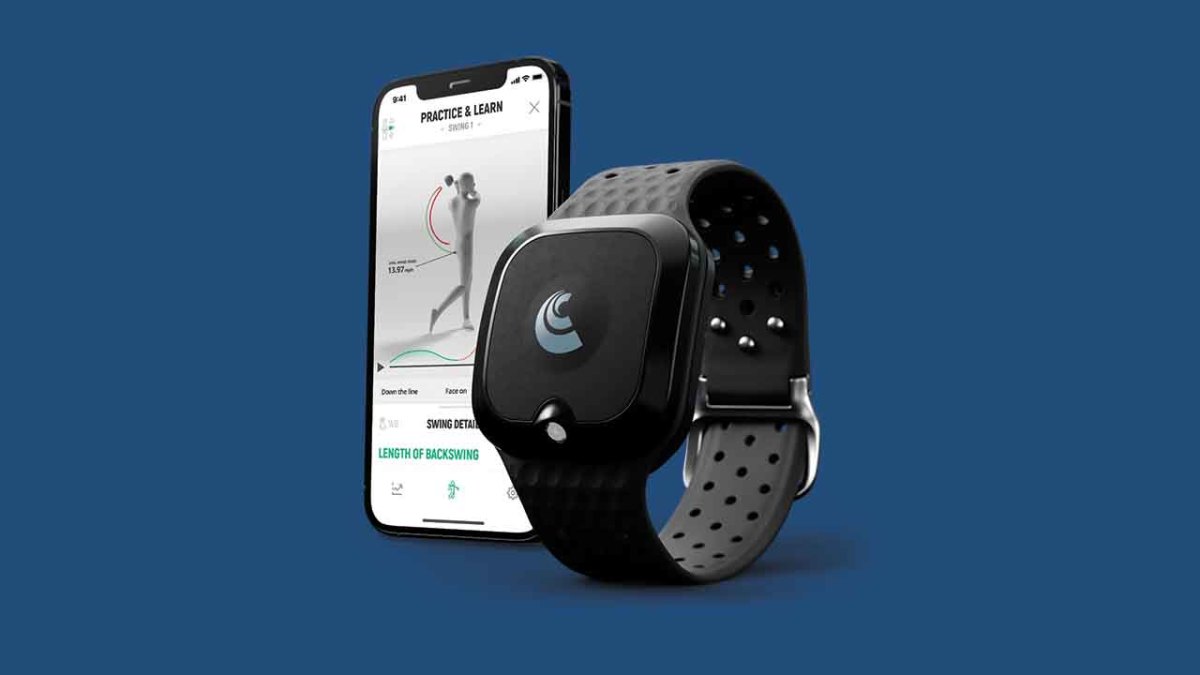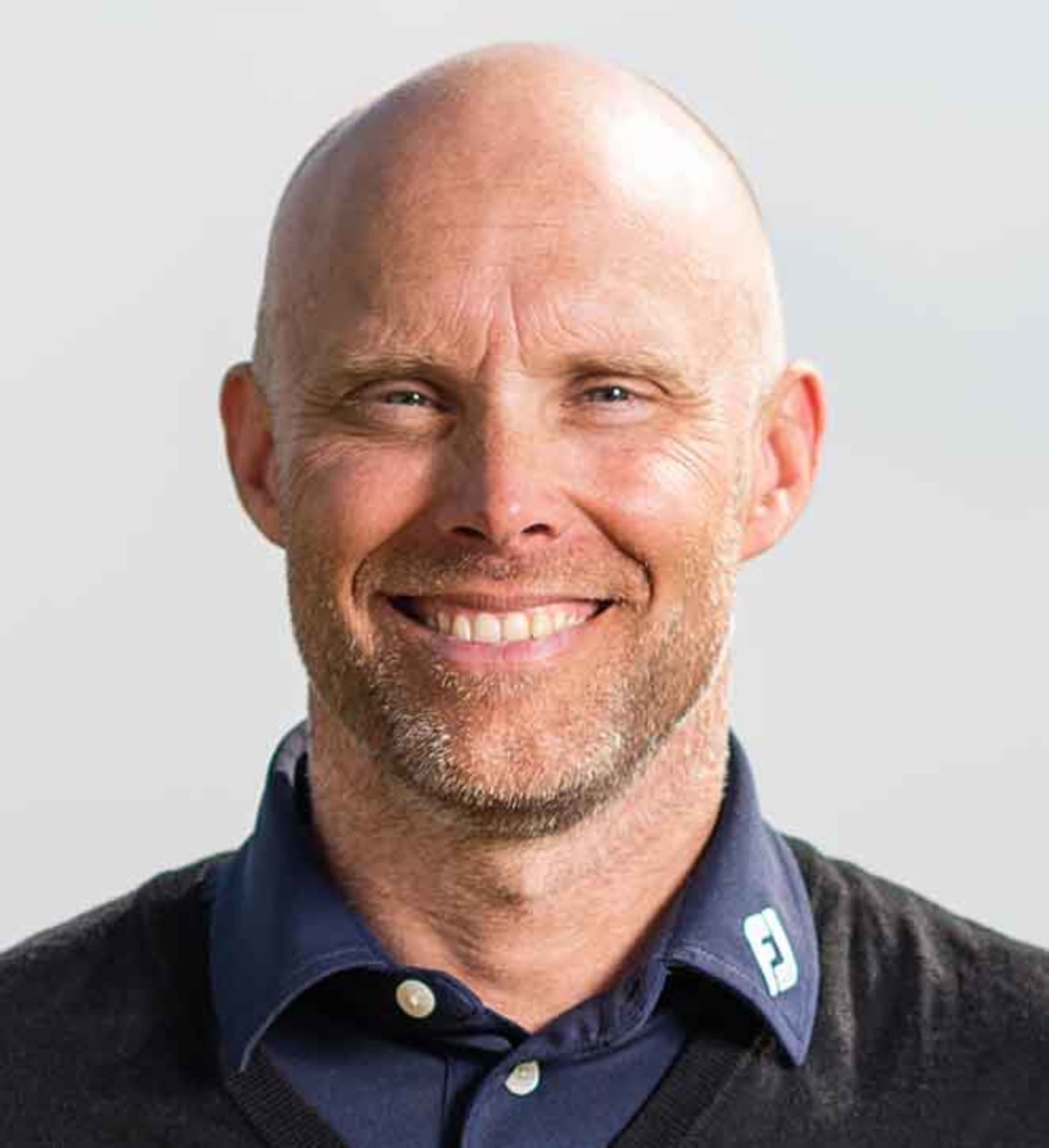New Wearable Tech Unlocks Swing Issues With Instant Feedback

Ever been on a mundane car ride and the check engine light flashes? Questions suddenly permeate the mind, naturally focused more on the symptom than diagnosis.
Of course, treating the symptom and not the cause only leads to frustration. It's a fitting metaphor for the value the new deWiz Golf training aid brings, for it's all about diagnosing and correcting swing issues.
The comprehensive swing analysis tool provides verisimilar data points backed up by every recorded swing. Simulators and launch monitors may track impact and flight patterns, but deWiz gets inside mechanics to illustrate where a swing may have gone awry—all through a wearable tech device resembling a watch that feeds data points to a complementary app.
"What we're doing is helping golfers hit longer, straighter and closer," said Markus Westerberg, co-founder and chief product officer. "And to hit longer, we help them with the backswing and/or make the whole swing faster. We have a lot of tempo numbers and measure the start-to-impact time."
When tuned into the app, an avatar swings in a templated area and mirrors each one taken by the user. It tracks the position and direction of the hands as they pass through a trace line, helping the golfer identify movement and irregularities that lead to unwanted shots.

A compelling aspect lies in its "Learning Stimuli" feature. When a shot is off, the golfer receives real-time, haptic feedback that provides an electric pulsation via the device. The user also has the option of using instantaneous audio feedback.
In terms of analytics, deWiz measures 11 swing data points on each swing. Golfers can review transition, backswing length and plane, maximum backswing width, maximum hand speed and five tempo measurements. Advanced metrics are available to teaching professionals and an elite players program.
It's all heady stuff.
No surprise there since Westerberg is also a certified Sweden PGA instructor and former European Tour pro.
The product was borne out of coaching sessions with deWiz co-founder Christian Bergh, who had trouble correcting a slice. The teaching sessions within Westerberg's studio were productive, but whenever Bergh tried translating the lessons to the course the slice continued rearing its ugly head.
Bergh suggested developing an apparatus that would pulse shock him each time he went over the top on his swing. The two toiled on a device and eventually met a Swedish neuroscience professor, who relayed they were on the right track—except rescripting the brain didn't need to be painful. The brain would learn quicker with instantaneous reminders, leading to the Learning Stimuli feature created on motor learning science.
After devoting more than 50,000 hours to testing, developing proper algorithms and data points, deWiz launched a prototype in 2018.
"We were fumbling around in the dark, but we came out into the light," Westerberg said.

Sharing the same coach as Westerberg at the time, three-time major champion Vijay Singh came on board early as an ambassador. Subsequently, the deWiz global ambassador roster has grown to include Bryson DeChambeau, Lanto Griffin, Yuka Saso, Annika Sorenstam and Henrik Stenson, among others.
Singh helped carve the device's path, albeit it unknowingly. A week after he received the prototype, Singh called Westerberg and said his app was broken.
The deWiz developers thought so too after seeing 7,000 swings, thinking it wasn't possible. Singh, a notorious workhorse, indeed took the swings, yet Westerberg soon discovered the data needed to integrate with the cloud because of having so many swings.
Incidentally, this past weekend Singh wore a customized "tournament mode" firmware version in all three rounds at the PGA TOUR Constellation Furyk & Friends. The app was also customized.
"We're doing this to help everyone get better, and we want to see what players can do in tournament play to see how they really swing under pressure," said Westerberg.
The device was within the Rules of Golf with the custom software and received PGA Tour rules official approval for competition. It went into "stealth mode," where the app goes black and feedback is disabled until after a round.
A preliminary analysis report by deWiz showed how Singh’s swing was faster, shorter, and less over the top during the tournament compared to his range session prior to a round.
For example, after crunching myriad numbers, the data showed his swing was on average 6% faster in competition on his start-to-impact time. The analytics also revealed his backswing was on average 1.3 inches shorter during the tournament. And his transition, or how many inches over or under the top the downswing compared to backswing, displayed that his swing was on average 2 inches less over the top, a 54% difference between the range and competition.
The data science team from deWiz identified that Singh dropped his hands more in transition on several shots deemed “misses.” On misses, his backswing was slightly faster compared to good shots. Finally, they deemed Singh maintained consistency with his length of backswing and tempo under pressure significantly better than previous club golfer data captured.
Looking ahead, this week Notah Begay will wear the tool at the PGA TOUR Champions SAS Championship.
“To our knowledge, this is the first time a player has gotten comprehensive and exact swing data collected from a global professional tournament with the ease of a wearable technology,” said Laszlo Varga, CEO, deWiz Golf. “To call this a groundbreaking event for swing analysis may prove to be an understatement, as now golfers like Vijay and Notah, who are using deWiz, will not have to rely on guesswork or feel to understand precisely what happen within their swing during competition.”
For consumers interested in the product, the wearable tech device sells for $699 through the company's website. The app is free for Android and iOS users.
Westerberg said he hopes it becomes a core product as "a household name in the golf community and be a part of as many golfers' setup as possible, while helping golfers play better and see how fantastic they can be."
